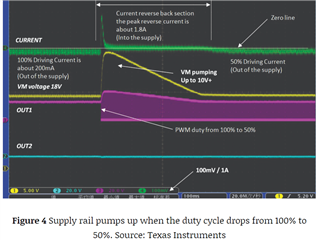Hello team,
My customer asked of waveform below and want to know why the output has the slope at a certain situation. (red rectangular)
I assumed that would be the slow decay but VINs are not show both 'high' and also the timing is 4s/div which is too large for slow decay.
Would you see and give your insight?

Best Regards,
Ernest





